9aplus
Member
Some giros seen on MAKS 2009 Moscow, Zukovski
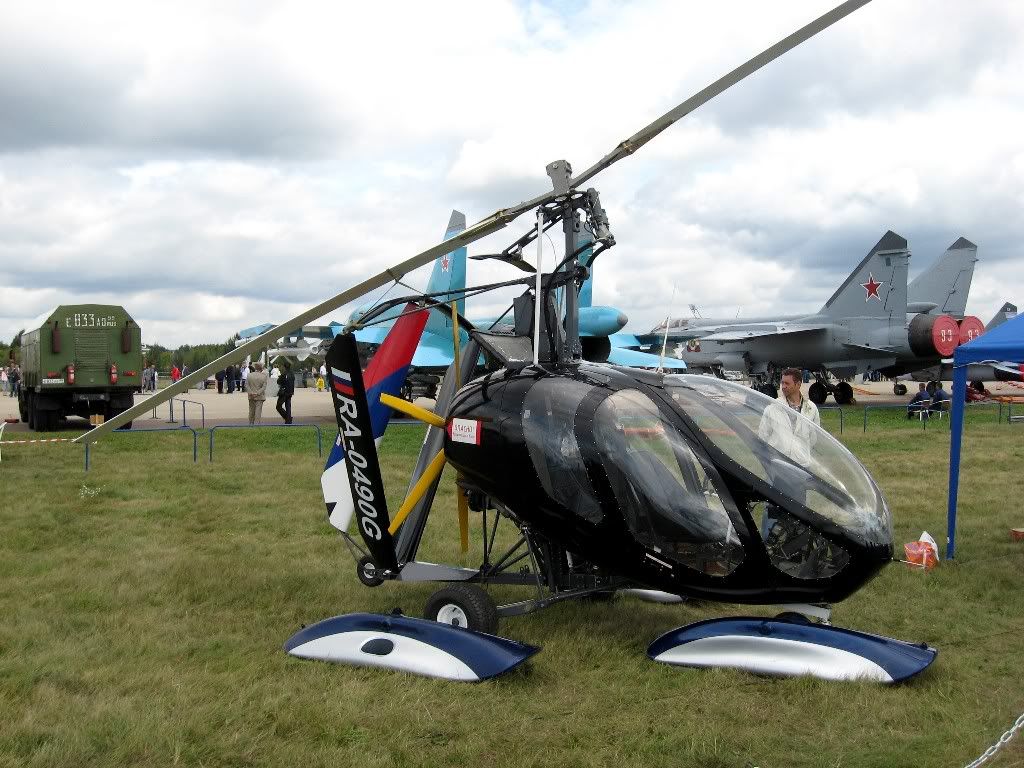
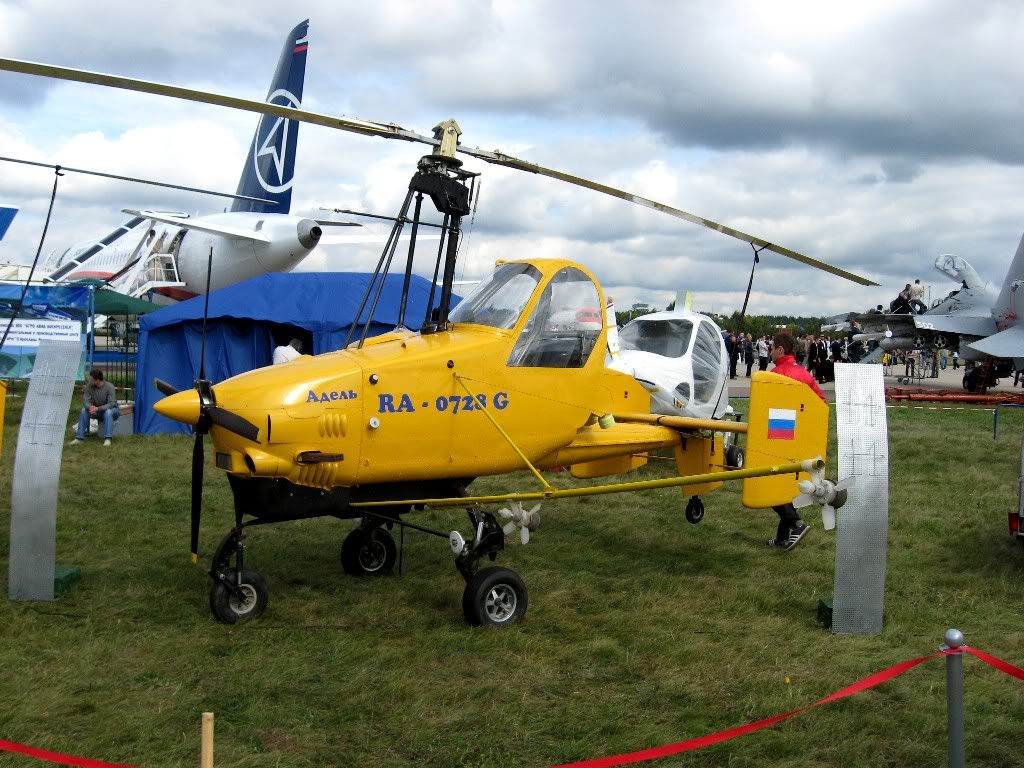
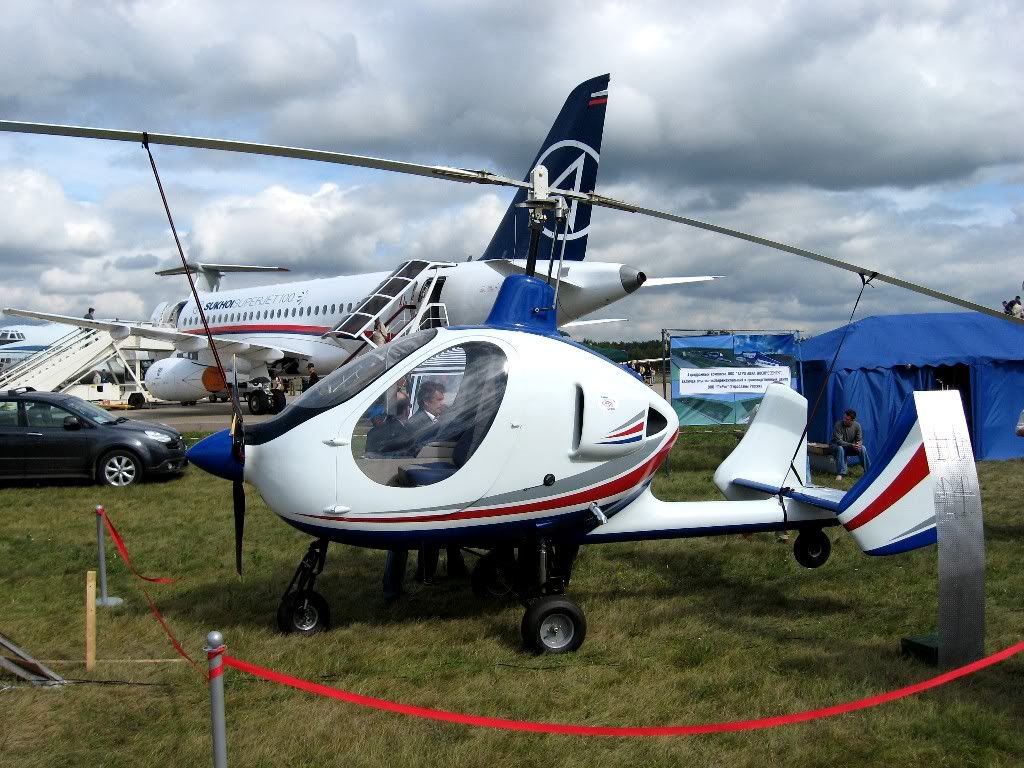
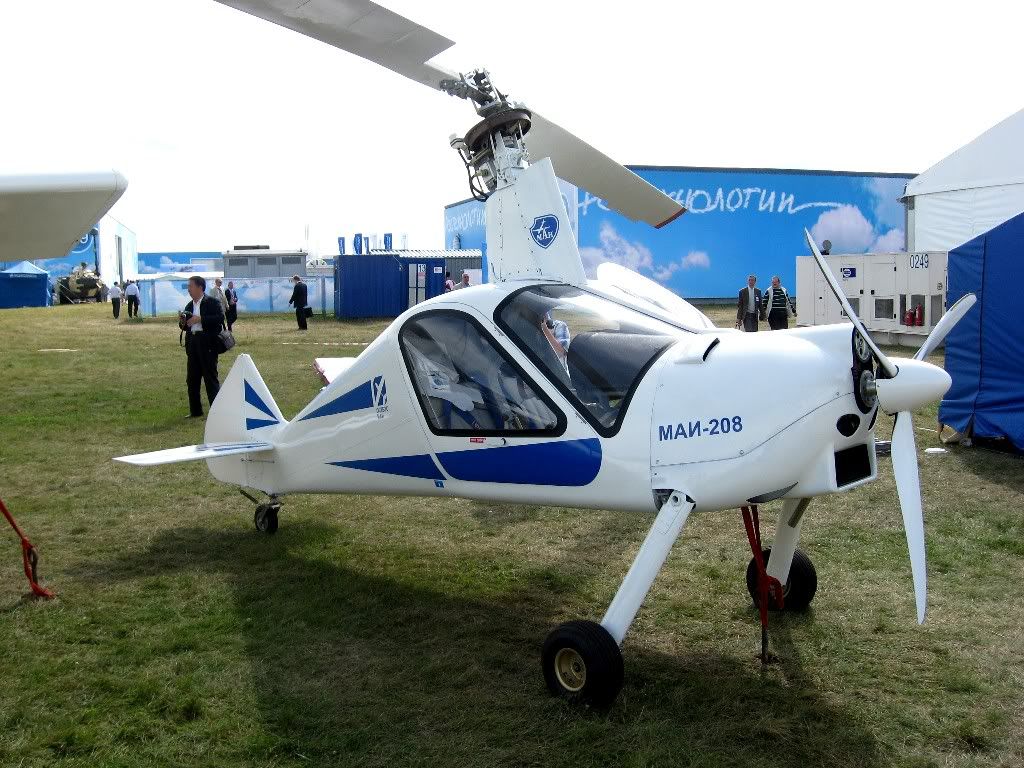








I really like that MAN-208
Ditto that!
Can't really see how the mast goes down to the airframe though.
The construction of the mast is complex
Janusz
Guys,
have some more pics of MAI 208, hope to upload tomorrow,
together with spec. , nice machine indeed
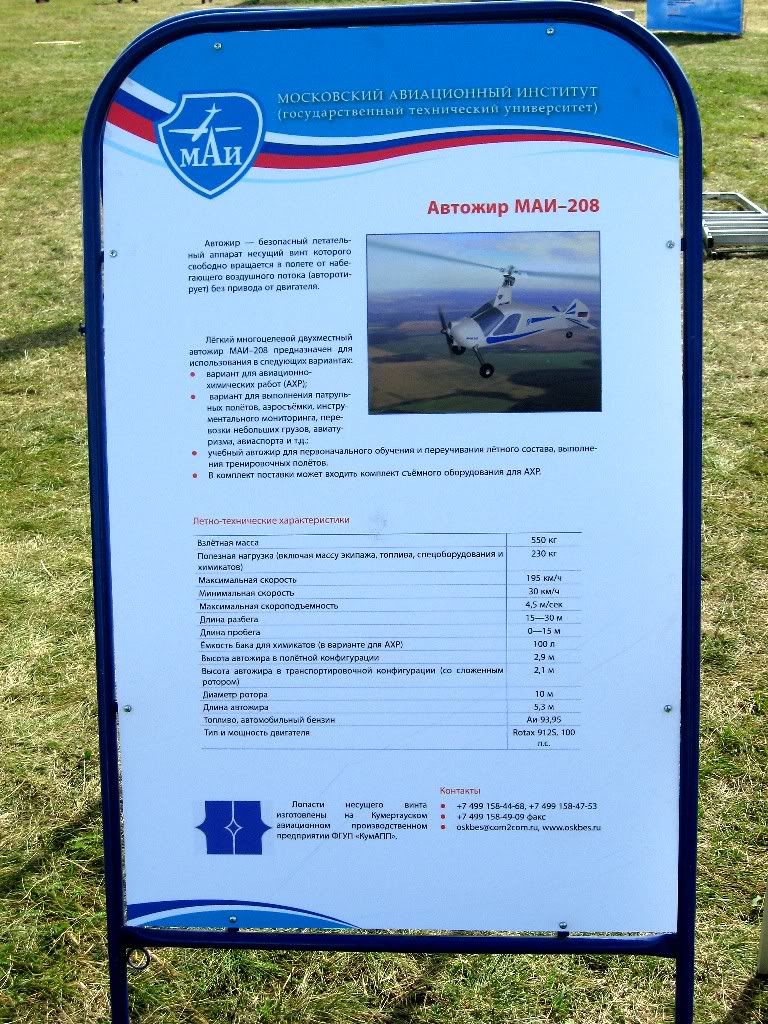

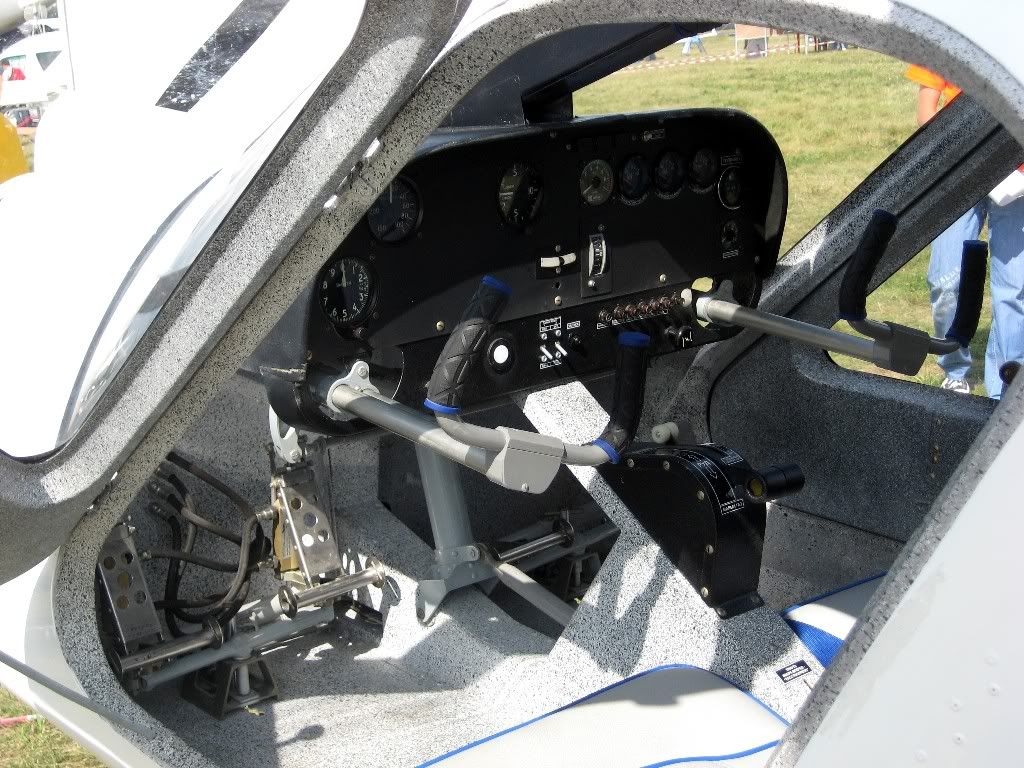
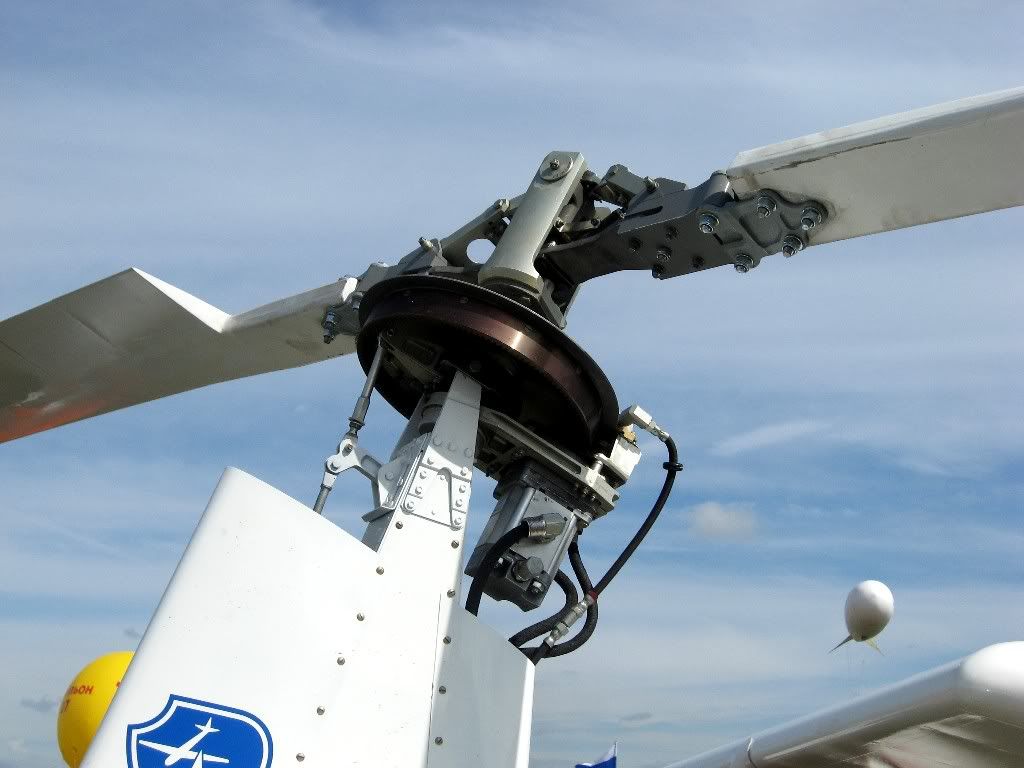
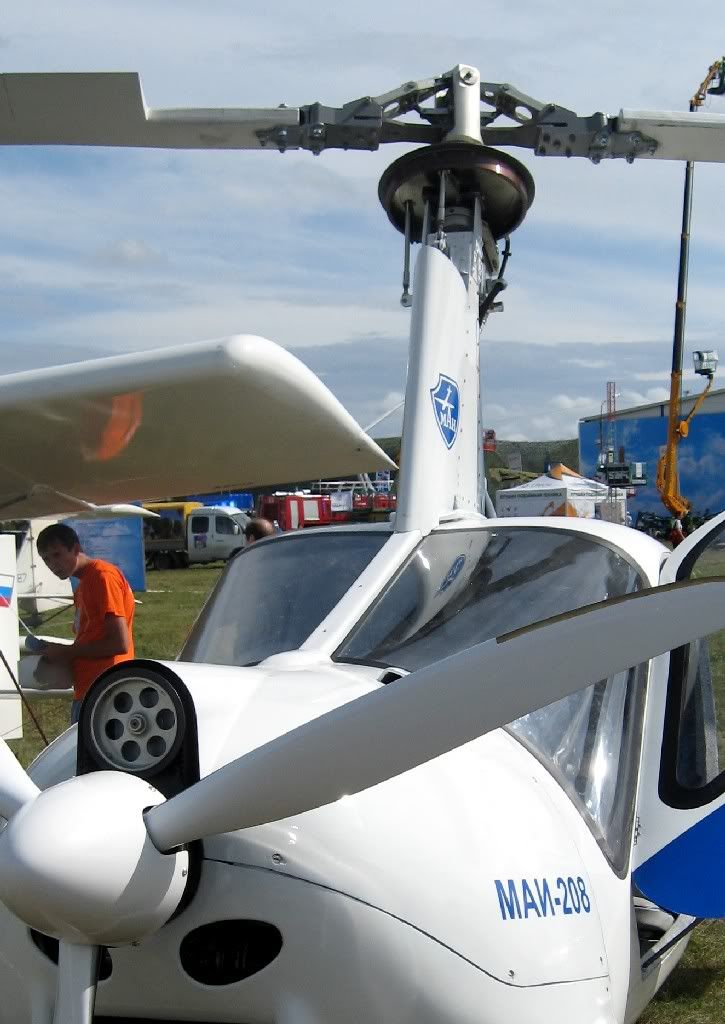

What looks like a hub is a flex strap that allows free coning. The scissors links above take the thrust and feathering loads. A central hub hinge and scissors link would do the same thing.There's a lot about that rotorhead that is new to me. Looks like the hub bar in the middle is a pretty thin strap of metal, and what are the other linkages above the hub bar?
I can't tell; does it have offset like a Bensen rotorhead?
I can't see the roll pivot, but I can see a control rod going to the head that looks like it would control roll.
It also looks like the teeter axis is not perpendicular to the blades (what is that angle called?)
Very nice looking machine.
It also looks like the teeter axis is not perpendicular to the blades (what is that angle called?)
What looks like a hub is a flex strap that allows free coning. The scissors links above take the thrust and feathering loads. A central hub hinge and scissors link would do the same thing.
